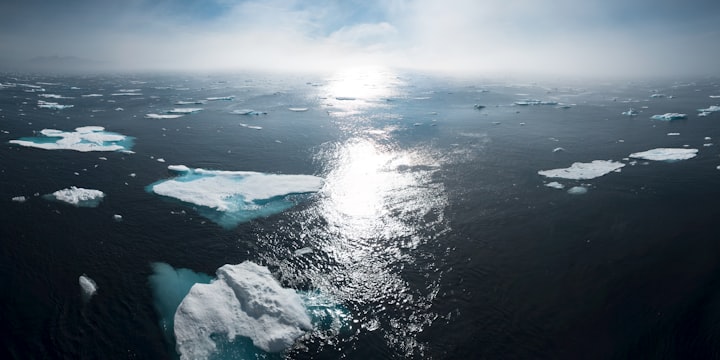The Arctic is warming nearly 4x faster than the rest of the world: new research
The Arctic is warming nearly four times as fast as the rest of the planet

This newsletter was originally posted on Conversation.
Earth is 1.1℃ warmer than it was at the start of the industrial revolution. This warming was not uniform, with some regions warming up to a mile faster. The Arctic is one such region.
A new look shows that over the past 43 years, the Arctic has warmed almost four times faster than the rest of the world. This means that the Arctic is, on average, three degrees Celsius warmer than it was in 1980.
This is concerning because the Arctic contains sensitive and delicately balanced climatic components which, if exacerbated, will have global consequences.
Why is the Arctic warming up so fast?
A lot of wisdom has to do with sea ice. It is a thin layer of sea water (usually 1-5 meters thick) that freezes in winter and partially melts in summer. .
Sea ice is made up of a thin layer of ice that reflects about 85% of the solar radiation that reaches space. In the ocean, the reverse happens. As the darkest natural soil on Earth, the ocean absorbs 90% of solar radiation.
Covered in sea ice, the Arctic Ocean acts as a giant reflective blanket, reducing the absorption of solar radiation. As sea ice melts, the rate of absorption increases, resulting in a positive feedback loop in which faster warming of the oceans leads to faster melting of sea ice, which in turn leads to faster warming of sea ice. oceans.
This feedback loop is largely responsible for what is called Arctic amplification and explains why the Arctic is warming alarmingly compared to the rest of the planet.
Is Arctic growth underestimated?
Numerical climate models have been used to estimate the extent of Arctic expansion. They generally estimate the enrichment load to be around 2.5, meaning the Arctic is warming 2.5 times faster than the global average. Based entirely on observational records of surface temperatures over the past forty-three years, Brand New discusses an estimate of the Arctic amplification rate of around four.
Seasonal modes rarely reach such extreme values. This indicates that models may not fully capture Arctic amplification feedback loops and therefore may underestimate the fate of Arctic warming and its potential consequences.
How worried should we be?
In addition to sea ice, the Arctic contains other climatic components that can greatly influence warming. If it is given too much importance, it will also have international consequences.
In addition to sea ice, the Arctic has other seasonal additions that are very sensitive to warming. If given too much importance, they will also have global consequences.
One of these elements is permafrost, the (no longer) completely frozen layer of the earth's soil. As temperatures rise in the Arctic, the energy layer, the top layer of soil that melts every summer, deepens. As a result, biological activity in the living layer will increase, which in turn will release carbon into the atmosphere.
Arctic permafrost contains enough carbon to raise average global temperatures by more than 3℃. If the permafrost thaws rapidly, a runaway feedback technique, often referred to as the permafrost carbon time bomb, is likely to occur. The release of previously stored carbon dioxide and methane will contribute to Arctic warming, leading to further melting of permafrost.
Another aspect of the Arctic that is in danger of warming is the Greenland Ice Sheet. As the largest mass of ice in the Northern Hemisphere, it contains enough frozen ice that, if it were to melt, it could raise international sea level by 7.4 meters.
When the amount of relaxation at the bottom of the ice sheet exceeds the value of glacial ice accumulation, its extent rapidly decreases. When this restriction is granted, the level drops. This will accelerate melting as temperatures are higher at lower elevations.
This feedback loop is often referred to as the Little Ice Sheet instability. Previous studies have predicted that rising temperatures will raise the border around Greenland by about 4.5℃ above pre-trade degrees. Given the incredible thermal value of the Arctic, this critical threshold is likely to increase rapidly.
Although there are some spatial differences in the amount of amplification of
About the Creator
Huzaifa Ali
Curios for learning and amazing tips and tricks





Comments
There are no comments for this story
Be the first to respond and start the conversation.